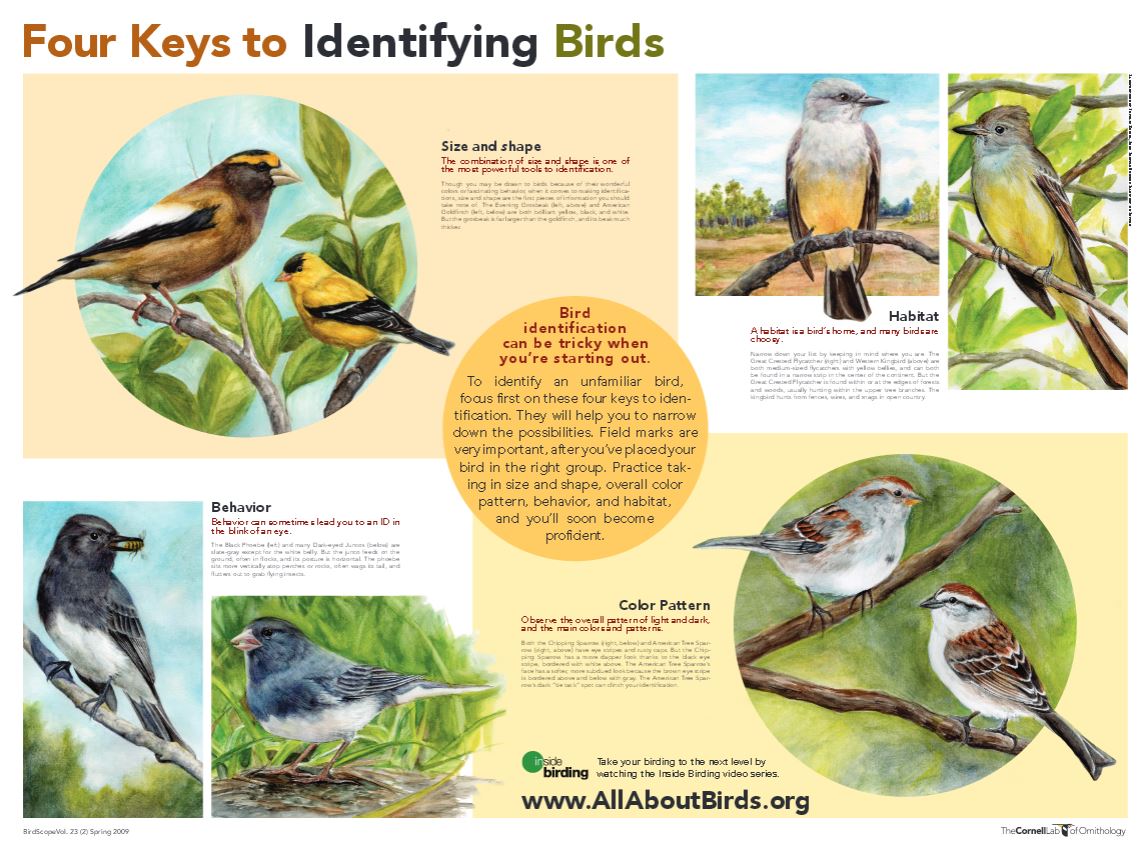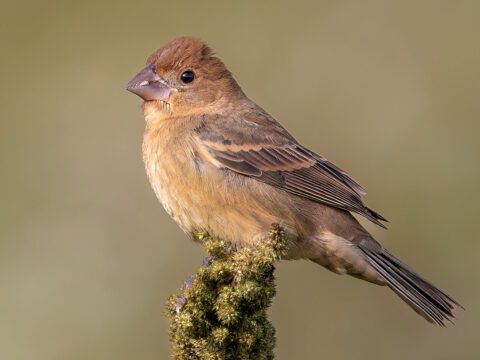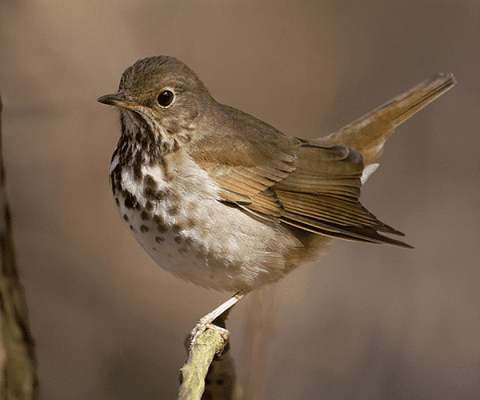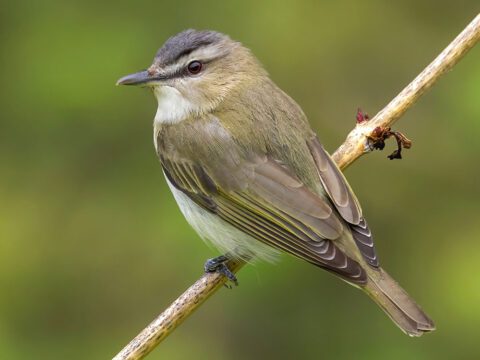Four Keys to Bird Identification
April 15, 2009Bird identification can be tricky when you’re starting out. To identify an unfamiliar bird, focus first on these four keys to identification. They will help you to narrow down the possibilities. Field marks are very important, after you’ve placed your bird in the right group. Practice taking in size and shape, overall color pattern, behavior, and habitat, and you’ll soon become proficient.
Size and shape
The combination of size and shape is one of the most powerful tools to identification. Though you may be drawn to birds because of their wonderful colors or fascinating behavior, when it comes to making identifications, size and shape are the first pieces of information you should take note of. The Evening Grosbeak (left, above) and American Goldfinch (left, below) are both brilliant yellow, black, and white. But the grosbeak is far larger than the goldfinch, and its beak much thicker.
Related Stories
Habitat
A habitat is a bird’s home, and many birds are choosy. Narrow down your list by keeping in mind where you are. The Great Crested Flycatcher (right) and Western Kingbird (above) are both medium-sized flycatchers with yellow bellies, and can both be found in a narrow strip in the center of the continent. But the Great Crested Flycatcher is found within or at the edges of forests and woods, usually hunting within the upper tree branches. The kingbird hunts from fences, wires, and snags in open country.
Color Pattern
Observe the overall pattern of light and dark, and the main colors and patterns. Both the Chipping Sparrow (right, below) and American Tree Sparrow (right, above) have eye stripes and rusty caps. But the Chipping Sparrow has a more dapper look thanks to the black eye stripe, bordered with white above. The American Tree Sparrow’s face has a softer, more subdued look because the brown eye stripe is bordered above and below with gray. The American Tree Sparrow’s dark “tie tack” spot can clinch your identification.
Behavior
Behavior can sometimes lead you to an ID in the blink of an eye. The Black Phoebe (left) and many Dark-eyed Juncos (below) are slate-gray except for the white belly. But the junco feeds on the ground, often in flocks, and its posture is horizontal. The phoebe sits more vertically atop perches or rocks, often wags its tail, and flutters out to grab flying insects.
Get a Full-Size Poster
Want to put this poster on your wall? It’s easy – simply download it at a convenient size:
- Low resolution: this version prints on an 8.5 x 11 sheet of paper and is about 650 kB
- High resolution: this large file (20 MB) will print at full size, 23 x 18 inches. You’ll need to print it on several pages and tape them together
The poster was painted by Natalie Koscal, a Cornell junior and the Spring 2009 Bartels Science Illustration Intern at the Cornell Lab of Ornithology.
Originally published in the April 2009 issue of BirdScope.

All About Birds
is a free resource
Available for everyone,
funded by donors like you
American Kestrel by Blair Dudeck / Macaulay Library





